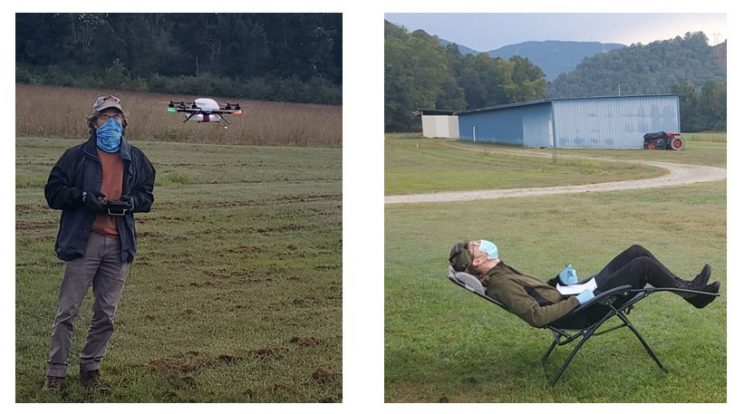ARL Weekly News – October 2, 2020
| Recent Announcements and Events |
LaToya Myles Named Acting Director of ATDD

Dr. LaToya Myles
LaToya Myles, Ph.D. has agreed to serve as Acting Director of the Atmospheric Turbulence and Diffusion Division of the NOAA Air Resources Laboratory, beginning October 1, 2020. Dr. Myles is a proven leader and dedicated scientist whose work has advanced understanding of atmospheric chemistry and the environment.
The Mississippi native is a magna cum laude graduate of Alcorn State University with a B.S. in chemistry and a B.S. in biology and has a Ph.D. in environmental sciences from Florida Agricultural and Mechanical University. Her federal career began in 2001 as a fellow supported by the NOAA Educational Partnership Program. Through numerous professional and community organizations, she advocates for STEM education and serves as a mentor to students who represent the next generation of scientists. She currently serves as chair of the American Geophysical Union (AGU) Honors and Recognition Committee and has leadership roles with numerous national and local organizations.
Routine Vertical Profiling Flights Resume at ARL/ATDD
Since 2015, the NOAA Air Resources Laboratory (ARL) Atmospheric Turbulence and Diffusion Division (ATDD) in Oak Ridge, Tennessee has been using small Unmanned Aircraft Systems (sUAS) to better understand processes occurring in the lowest few hundred feet of the atmosphere. Routine flights began in March 2020 with the goal of providing concurrent temperature, moisture, and wind data in near-real time to the NOAA National Weather Service WFO in Morristown, Tennessee to assist weather forecasters, but were suspended shortly thereafter due to pandemic concerns. On August 20, 2020, ATDD resumed flights with its Meteodrone sUAS, typically 3-4 days per week with up to 8 flights a day. Additional safety measures, including wearing face coverings and gloves at all times and separate vehicles, were implemented. From August 20, 2020 to September 24, 2020, ATDD team performed 115 such flights, and will continue routine flights as well as during other weather events (severe thunderstorms or winter precipitation) to aid our understanding of changes in the atmosphere to improve weather forecasts.

Ed Dumas, an engineer with ATDD, and Travis Schuyler, a postdoctoral research associate with ATDD, at Oliver Springs. Ed operates the sUAS (left) while Travis is the visual observer (right).
| Recent Awards and Publications |

Leah Hopson.
Leah Hopson, Lapenta Intern, Awarded Outstanding Undergraduate Presentation.
Leah Hopson, one of the William Lapenta NOAA interns in ARL, attended the Mid-West Student Conference on
Atmospheric Research held September 26-27, 2020. The conference was held virtually by the University of Illinois at Urbana-Champaign. Leah gave an oral presentation (pre-recorded) for the work she did during the summer internship and answered questions right after the video was shown. For her presentation, “Using a Tracer of Opportunity Dataset to Evaluate the HYSPLIT model,” Leah received an award for outstanding undergraduate oral presentation.
Publication on Evaluation of Land Surface Temperature measurements.
A manuscript entitled “Intercomparison of In Situ Sensors for Ground-Based Land Surface Temperature Measurements” by Praveena Krishnan, Tilden P. Meyers, Simon J. Hook, Mark Heuer, David Senn, and Edward J. Dumas has been published in Sensors. The paper evaluates the quantitative uncertainties in the ground-based land surface temperature (LST) measurements using narrow angle broadband infra-red temperature sensors, hemispherical longwave radiation measurements by pyrgeometers, forward looking infrared camera with direct LSTs by multiple thermocouples and near surface air temperature. This study used observations from the intensive field experiment conducted at NOAA’s Air Resources Laboratory (ARL)’s Atmospheric Turbulence and Diffusion Division (ATDD) in Oak Ridge, TN from October 2015 to January 2016; these and four grassland sites were established for NOAA’s Surface Energy Budget Network (SEBN).

